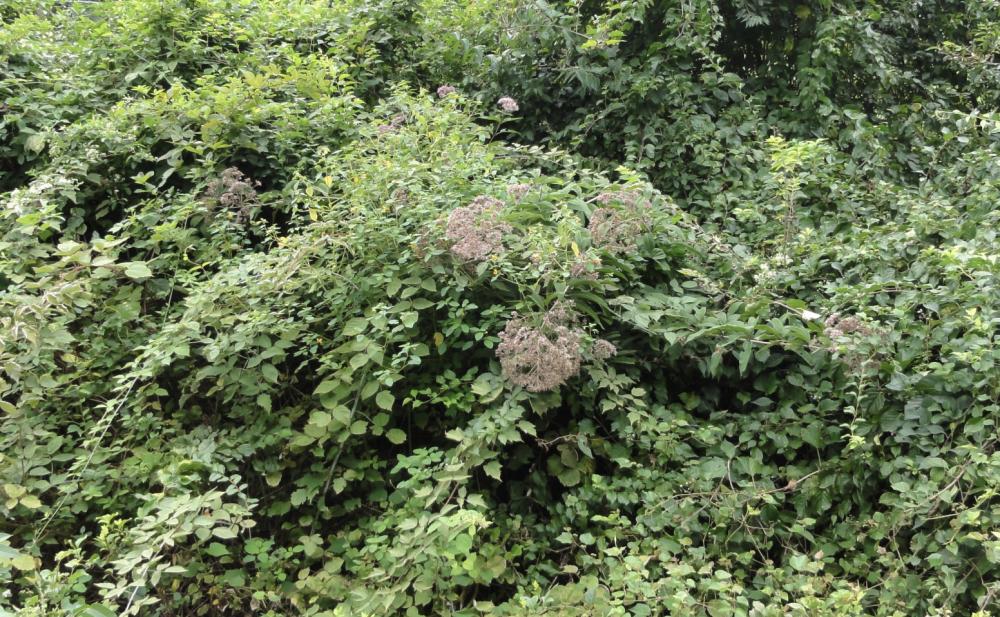Obvious perhaps, but fundamentally our impression of Talbot County comes from the immediate views we see out the car window, going up and down the roads every day. That, more than any other thing, defines Talbot. The County is small enough that most of us are moving daily through both the “built environment” (towns, villages) and the rural landscape that connect them. What we see on the roadsides is in fact a big deal; it’s Talbot County. Yet most of us take it all for granted, hardly noticing the details that roll by.
It is the shared, collective experience in this public realm that creates a special sense of Talbot–for the travelers passing through, for the weekend tourists drawn here (in no small part by those vistas), and most importantly, for us lucky ones who have chosen to build our lives here. We should be attentive to the little things, appreciate the value of the vistas we share, protect and even enhance them. In my opinion, using Dave Wheelan’s word from last fall, we should be “fussy.”
Because the unique peninsular geography of Talbot creates a hub-and-spoke arrangement on the west side of Rt 50 (where most people live), the main collector roads—the Bypass and Routes 333 and 33 especially—are the constantly used arteries that really set the tone…. though others are important too.
So, as to our Talbot County landscape, is the glass half full or half empty? Is the “look and feel” of our roadsides getting marginally better or worse? Is it in the nature of things that slowly but inevitably, we go downhill?
In my opinion, there is plenty to celebrate and plenty to criticize too.
Celebrations? Most of these examples are “just” the beneficial by-product of decisions property owners make for their own private reasons. But still…
Talbot’s farmers work the fields as a business, as a career, and as a way of life. And we get to watch! For many years I lived in the city and never had the slightest notion of what I was missing. In some abstract way I knew crops got planted and crops got harvested, but I didn’t “get it” in the least. In Talbot we all can mark the cover crop maturing to Kelly green; then the fields getting prepped; those first seedlings popping up inches high, the whole land light green. Next thing you know you can’t see beyond the first row of 8 foot stalks! (All of that if the field wasn’t flooded out at planting time; that’s another story.) A similar tale for beans and wheat, each its own slightly different changing vista as the seasons unfold. (And who even knew of sorghum?)
A number of civic-minded property owners seem to landscape their roadsides especially to benefit the public, can you imagine? No doubt it’s a matter of personal pride and improves their own property values as well…but we are all the beneficiaries, every day, every pass by. On Rt 33 near the pincushion, for example, is a quarter mile stand of carefully tended loblolly pine. There are many other examples.
Similarly, thanks be to every property owner who pays attention to the look of their property from the roadway—not just along the County roads, but in Easton and other towns and villages as well. Each is attending not just to their own private interest, but also to the “look and feel” of Talbot County that all of us share every day. (The same is true of business owners, though, in my opinion, with significantly less positive impact.)
Criticisms? Here are some:
Very many trees and shrubs along Talbot County’s roadsides are sadly overrun with invasive vines, destructive and unsightly parasitic overgrowth. (Thankfully, a master gardener group led by Lisa Ghezzi is beginning work on this problem, and some others (e.g., Easton Utilities) seem to be getting engaged too.)
Utilitarian to the core, the public sector players who control much of what we see (think SHA) are often the worst offenders, relatively insensitivity to the impacts they have on our road scapes. Death by a thousand cuts.
Visual screening of necessary equipment that is thrust into the rural environment, from small utility boxes to entire solar installations, could be much more effective.
For our towns and most villages, there is scant sense of arrival as one enters, a haphazard transition at best from the “rural” to “built” segments of our County. It is a lost opportunity and invites further blurring of the distinct qualities between the rural versus built-up elements of the community, what should be a complementary yin and yang relationship.
As you travel the roads and streets of Talbot County, take notice. Make your own list of vistas to celebrate, and what makes them so. Make your own list of failures, where as a community we could do better, for the everlasting (one hopes) benefit of the County as a whole.
Dan Watson is the former chair of Bipartisan Coalition For New Council Leadership and has lived in Talbot County for the last twenty-five years.



Margot McConnel says
Well said Dan! And thank heavens for involved citizens like Liza Ghezzi and the other Master Gardeners